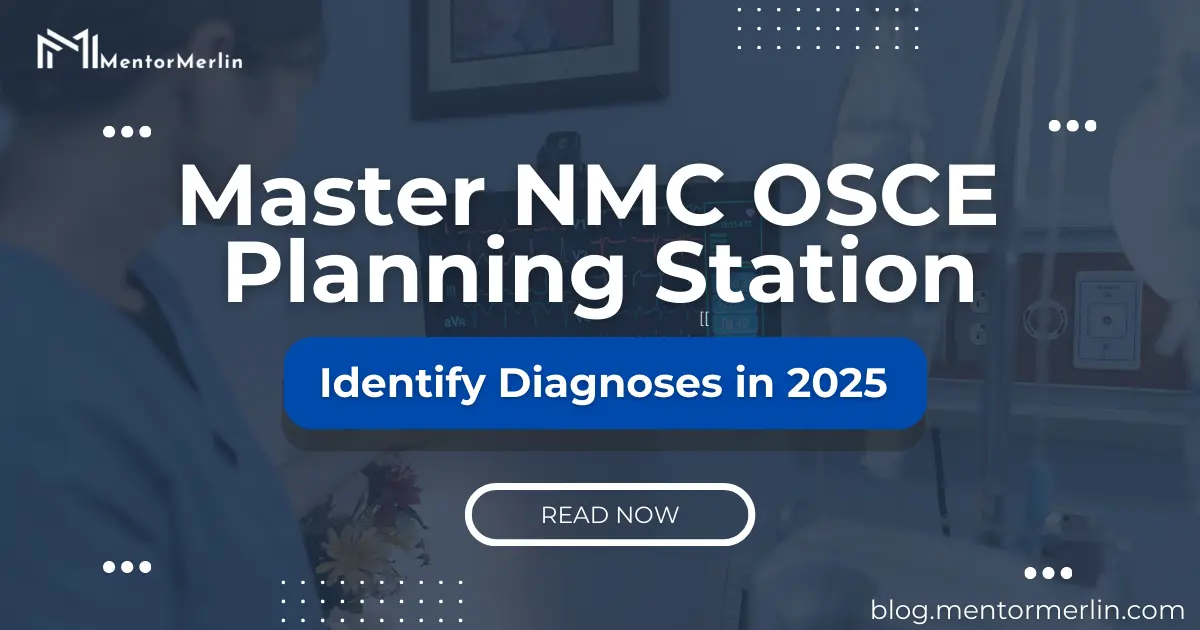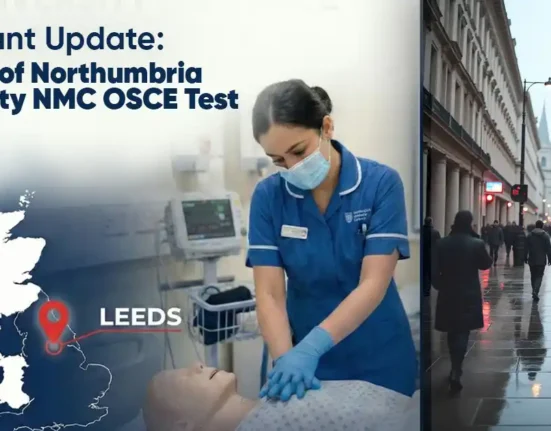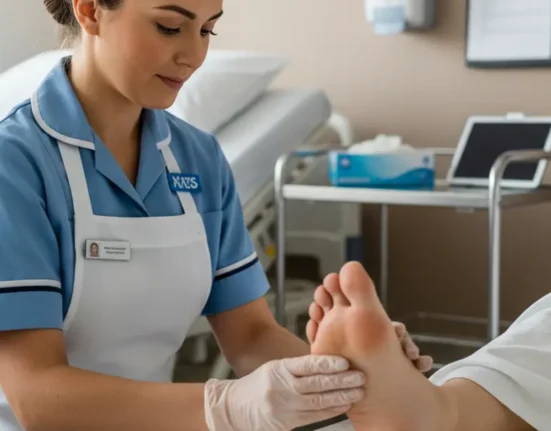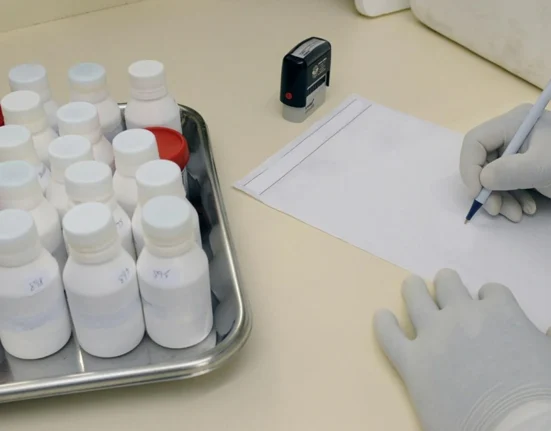NMC OSCE planning station can feel pretty overwhelming, but trust me, once you get the hang of it, it’s not as bad as it seems. I still remember when I started studying for it—I had no clue how to identify nursing diagnoses. But after a while, I realized it all comes down to thinking things through carefully and step by step. The key is really looking at all the details—patient history, what the physical exam shows, and the lab results—and piecing it all together to figure out the right diagnosis.
Now, the NMC OSCE planning station isn’t just about memorizing a bunch of diagnoses. It’s about understanding where the patient is coming from, what’s going on with them, and how that affects their overall health. For me, it really helped to focus on how each diagnosis impacts the care plan. That’s what makes this step so important: it sets the stage for everything that follows. Once I started looking at the bigger picture, I felt much more confident. With practice, identifying nursing diagnoses just clicked, and I could create plans that really matched the patient’s needs. Seriously, if I can do it, you’ve got this! Just stay calm, follow the steps, and you’ll get there.”
Steps to Identify Nursing Diagnoses in NMC OSCE Planning Station:
- Assessment
Gather comprehensive data about the patient’s health status through history, physical examination, and lab results. Pay attention to both subjective and objective data. - Identify Problems
Determine actual or potential health problems based on the data. This can include physical, emotional, social, and spiritual issues. - Formulate Nursing Diagnosis
Use a structured format for standardized nursing diagnoses. This format typically includes following parts:- Problem: The patient’s health issue or risk (e.g., “Acute pain”).
- Symptoms: The evidence of the problem (e.g., “as evidenced by pain score”).
Examples of Common NMC OSCE Planning station Nursing Diagnoses:
- Acute Pain
- Problem: Acute pain
- Symptoms: As evidenced by patient’s pain score of 8/10 pain, or by scenario details
- Shortness of Breathing Pattern
- Problem: Shortness of breath
- Symptoms: As evidenced by shallow breathing, use of accessory muscles, and respiratory rate of 30 breaths/min
- Risk for Infection
- Problem: Risk for infection
- Symptoms: No specific symptoms yet, as it is a risk diagnosis
- Impaired Physical Mobility
- Problem: Impaired physical mobility
- Symptoms: As evidenced by difficulty moving, requiring assistance with walking

NMC OSCE Planning station Nursing Diagnosis Framework:
- Actual Diagnoses: Problems that currently exist
- Risk Diagnoses: Conditions the patient is at risk of developing (e.g., “Risk for falls”).
Identify correct Nursing Diagnosis is important in NMC OSCE Planning Station:
Identifying the correct nursing diagnosis in the NMC OSCE Planning station is critical for effective patient care. It forms the foundation for planning and delivering nursing interventions that meet patient-specific needs. Here’s why it’s so important:
- Personalized Care
Accurate nursing diagnoses allow for individualized care. It ensures that interventions are tailored to the patient’s specific health issues and conditions. - Guides the Care Plan
Nursing diagnoses help in developing a clear, structured plan for addressing the patient’s needs. They outline the problems, set priorities, and guide the nurse in selecting the most appropriate interventions to achieve positive outcomes. - Prevents Complications
Correct diagnoses, particularly in risk scenarios (e.g., “Risk for infection”), help in taking proactive steps to prevent complications before they occur, thus improving patient safety. - Evaluation of Outcomes
Nursing diagnoses also provide measurable criteria for evaluating the effectiveness of interventions. They help nurses assess whether patient outcomes have been met or if the care plan needs to be adjusted.
Mastering the identification of accurate nursing diagnoses, especially for the NMC OSCE exam, will ensure that you’re prepared to assess, plan, and deliver optimal care.
Steps to Identify Nursing Diagnoses in NMC OSCE Planning Station:
- Assessment
Gather comprehensive data about the patient’s health status through history, physical examination, and lab results. Pay attention to both subjective and objective data. - Identify Problems
Determine actual or potential health problems based on the data. This can include physical, emotional, social, and spiritual issues. - Formulate Nursing Diagnosis
Use a structured format for standardized nursing diagnoses. This format typically includes following parts:- Problem: The patient’s health issue or risk (e.g., “Acute pain”).
- Symptoms: The evidence of the problem (e.g., “as evidenced by pain score”).
Examples of Common NMC OSCE Planning station Nursing Diagnoses:
- Acute Pain
- Problem: Acute pain
- Symptoms: As evidenced by patient’s pain score of 8/10 pain, or by scenario details
- Shortness of Breathing Pattern
- Problem: Shortness of breath
- Symptoms: As evidenced by shallow breathing, use of accessory muscles, and respiratory rate of 30 breaths/min
- Risk for Infection
- Problem: Risk for infection
- Symptoms: No specific symptoms yet, as it is a risk diagnosis
- Impaired Physical Mobility
- Problem: Impaired physical mobility
- Symptoms: As evidenced by difficulty moving, requiring assistance with walking
NMC OSCE Planning station Nursing Diagnosis Framework:
- Actual Diagnoses: Problems that currently exist
- Risk Diagnoses: Conditions the patient is at risk of developing (e.g., “Risk for falls”).
Identify correct Nursing Diagnosis is important in NMC OSCE Planning Station:
Identifying the correct nursing diagnosis in the NMC OSCE Planning station is critical for effective patient care. It forms the foundation for planning and delivering nursing interventions that meet patient-specific needs. Here’s why it’s so important:
- Personalized Care
Accurate nursing diagnoses allow for individualized care. It ensures that interventions are tailored to the patient’s specific health issues and conditions. - Guides the Care Plan
Nursing diagnoses help in developing a clear, structured plan for addressing the patient’s needs. They outline the problems, set priorities, and guide the nurse in selecting the most appropriate interventions to achieve positive outcomes. - Prevents Complications
Correct diagnoses, particularly in risk scenarios (e.g., “Risk for infection”), help in taking proactive steps to prevent complications before they occur, thus improving patient safety. - Evaluation of Outcomes
Nursing diagnoses also provide measurable criteria for evaluating the effectiveness of interventions. They help nurses assess whether patient outcomes have been met or if the care plan needs to be adjusted.
Mastering the identification of accurate nursing diagnoses, especially for the NMC OSCE exam, will ensure that you’re prepared to assess, plan, and deliver optimal care.
Enhance Your NMC OSCE Preparation
Our comprehensive OSCE training is designed to help you excel in the NMC OSCE exam. With tailored guidance, practice scenarios, and expert support, we ensure you’re fully equipped with the skills and confidence to succeed. Sign up for our OSCE course today and take your preparation to the next level! Also, check out the guide to prepare for NMC OSCE.

NMC OSCE For nurses Everything You Need to Know in 2024 👉 Click Here
For Any NMC OSCE Related Queries and Training Chat with Us!









